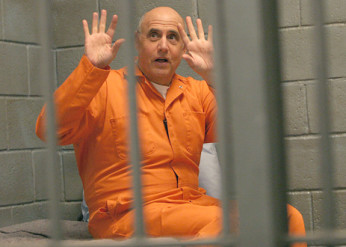By: Ryan Suit,
Lining up to be the first person to get the latest and greatest device has become a cultural phenomenon, and to some it could even be called a religion.[1] Just this past weekend, Apple sold 13 million new iPhones.[2] But when you get that iPhone 6S or 6S Plus, will you throw away your iPhone 6? And what ever happened to your iPhone 5, 4, 3, 2, or even original iPhone? Concern over so-called “e-waste” has lead many jurisdictions to pass legislation to combat the accumulation of technological garbage.[3]
E-waste is the broad term for any piece of technology that has an electric cord or battery that is thrown away. The term is a catch-all for phones and computers to refrigerators and appliances.[4] The problem of e-waste is worldwide. 41.8 Million tons of e-waste were dumped globally in 2014, yet less than a sixth of that was properly recycled.[5] When many people think of e-waste, they conjure images of computer dumps in Africa, China, and India, where old pieces of technology are burned and scavenged for leftover precious metals.[6] That is obviously a huge problem, but the issue is not solely abroad.[7] In 2014, the United States was responsible for 7.1 tons of e-waste, over 1 million more tons than any other country.[8] The need for legislation to deal with e-waste is not just apparent, it is pressing.
Currently, the EPA recommends that e-waste such as phones, computers, and televisions be recycled at your local e-waste collection center.[9] Additionally, the EPA has made it the responsibility of the e-recycler to erase all the data on devices being recycled.[10] One of the most notable problems of e-waste recycling is the risk of identity theft.[11] If old hard drives or devices still have private or personal information stored on them, there is a risk that such information could be recovered.[12] Although the risk of identity theft is present, many recycling centers can wipe storage devices clean, or can destroy the devices entirely.[13] That being said, the EPA’s recommendation has only done so much to curb the threat of identity theft and increase rates of e-waste recycling.
Most e-waste recycling policies are left to the states.[14] To date, twenty eight states have passed legislation to deal with e-waste.[15] Most of the legislation places the responsibility of recycling e-waste on the manufacturers of the products. However, only about 1 million of the 7.1 million tons of e-waste in the U.S. was recycled last year.[16] Such a low rate of e-waste recycling, coupled with close to half of the states in the U.S. still not having any e-waste laws on the books, makes for a bleak outlook.
States have not done enough to combat e-waste. The EPA’s recommendation has fallen short of what it aims to achieve. E-waste is becoming more common, and the constant creation of new tech products only creates more e-waste. Now is the time for federal legislation to tackle the e-waste problem. Pull out your new iPhone to look up where your local landfill is located. If legislation is not passed soon, that landfill may be filled with e-waste.
[1] Philip Elmer-DeWitt, “Welcome to the Church of Apple”, Fortune (Sept. 27, 2015), http://fortune.com/2015/09/27/apple-church-temple/.
[2] James Vincent, “Apple sells 13 million iPhones in opening weekend record”, The Verge (Sept. 28, 2015), http://www.theverge.com/2015/9/28/9407767/apple-iphone-sales-6s-6s-plus.
[3] Sophia Bennett, “It’s 2015: Which States Have E-Waste Legislation?”, Electronic Recyclers Internation, Inc. (July 2, 2015), http://electronicrecyclers.com/2015/07/it-s-2015-which-states-have-e-waste-legislation.
[4] Id.
[5] Alister Doyle, “U.S., China top dumping of electronic waste; little recycled”, Reuters (April 20, 2015), http://www.reuters.com/article/2015/04/20/us-environment-waste-idUSKBN0NA00V20150420.
[6] Samantha L. Stewart, “Ghana’s e-Waste Dump Seeps Poison”, Newsweek (July 25, 2011), http://www.newsweek.com/ghanas-e-waste-dump-seeps-poison-68385.
[7] Id.
[8] Supra note 5.
[9] U.S. Environmental Protection Agency, Frequent Questions, http://www3.epa.gov/epawaste/conserve/materials/ecycling/faq.htm.
[10] Virginia Department of Environmental Quality, Computer and Electronics Recycling, http://www.deq.virginia.gov/Programs/LandProtectionRevitalization/RecyclingandLitterPreventionPrograms/ElectronicsRecycling.aspx.
[11] ForeRunner Recycling, http://www.forerunnerrecycling.com/faq.html#What_if_we_needed_destruction_of_the_drives_to_insure_the_data_is_secure.
[12] Id.
[13] Id.
[14] Supra note 5.
[15] Supra note 3.
[16] Supra note 5.
Photo Source: http://www.mesacounty.us/assets/0/79/162/190/7eae68b9-5e0c-4e9b-8961-038eab6127e7.jpg










